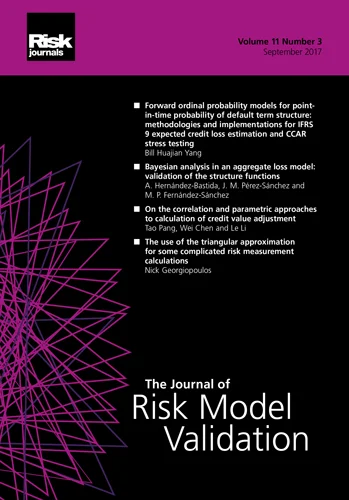Journal of Risk
ISSN:
1465-1211 (print)
1755-2842 (online)
Editor-in-chief: Farid AitSahlia

Testing a three-state model in currency derivative markets
Ako Doffou, Jimmy E. Hilliard
Abstract
ABSTRACT
This paper examines the ability of the jump–diffusion models to explain systematic deviations in implicit distributions from the benchmark assumption of lognormality. Jumps that occur in the spot exchange rate, due to supply and demand fluctuations in the currency market, impose distributions for spot and futures prices that have degrees of skewness and kurtosis different from those of the lognormal distribution. Merton’s (1976) model allows for diversifiable jump risk. Bates’ (1991, 1996) model allows the jump exchange risk to be systematic and derives the correct functional form of the market price of risk. Recent transactions data on futures and futures options are used to test the jump–diffusion stochastic interest rate model developed by Doffou and Hilliard (2001a), as well as Bates’ (1991, 1996) and Black’s (1976) models to price out-of-sample options in sterling, Deutschmark, and Japanese yen futures markets. The test results show that the jump–diffusion stochastic interest rate model performs better than Bates’ model, which in turn performs better than Black’s model.
Copyright Infopro Digital Limited. All rights reserved.
As outlined in our terms and conditions, https://www.infopro-digital.com/terms-and-conditions/subscriptions/ (point 2.4), printing is limited to a single copy.
If you would like to purchase additional rights please email info@risk.net
Copyright Infopro Digital Limited. All rights reserved.
You may share this content using our article tools. As outlined in our terms and conditions, https://www.infopro-digital.com/terms-and-conditions/subscriptions/ (clause 2.4), an Authorised User may only make one copy of the materials for their own personal use. You must also comply with the restrictions in clause 2.5.
If you would like to purchase additional rights please email info@risk.net








